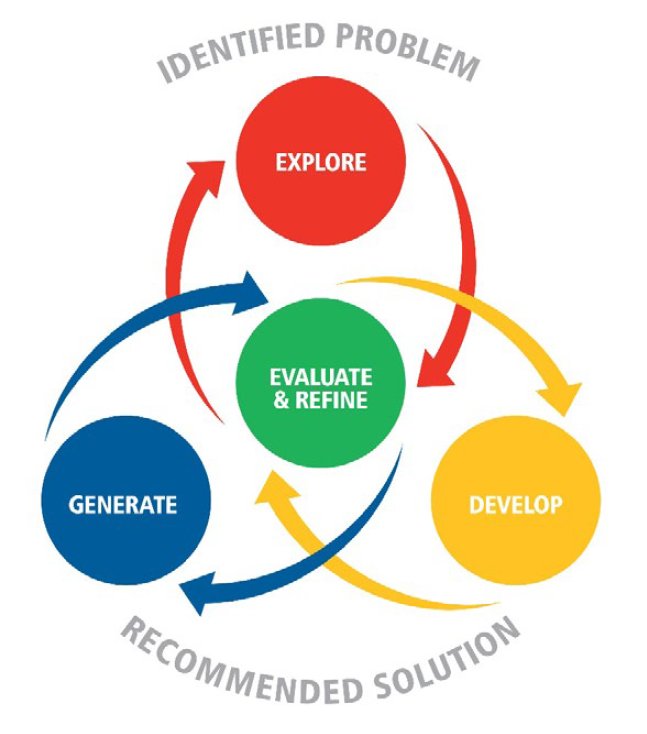Explore
The explore phase involves students investigating a need, want or opportunity to analyse and understand a digital problem and its relationship to existing solutions.
To explore the problem, students:
- describe problems from a user perspective
- recognise constraints
- use decomposition to dissect problems and existing solutions to similar problems
- use abstraction and pattern recognition to identify essential features of elements, components, relationships and structures of problems
- analyse problems, solutions and information to make decisions about the reasonableness of information and the structure, availability and accuracy of existing problems and solutions
- use systems thinking to identify and understand the relationships between users, solutions and the components of solutions in similar problems
- identify and understand possible solution requirements, such as information, skills and tools, by considering elements, components and features, and their relationship to the structure of the problem
- use design, systems and computational (decomposition, pattern recognition and abstraction) thinking processes to determine evaluation criteria that are used to appraise and make decisions throughout, and at the end of, the problem-solving process in Digital Solutions. Evaluation criteria are prescribed by the teacher or client (prescribed criteria) or determined by the student (self-determined criteria) and must include criteria to evaluate the personal, social and economic impacts, and quality, appropriateness and effectiveness of the developed component or solution
- use design thinking to evaluate ideas that best meet the evaluation criteria.
|
Develop
The develop phase involves students creating new understanding and identifying possible solutions using design, systems, and abstraction and algorithmic computational thinking processes. Students evaluate personal, social and economic impacts, components and digital solutions against criteria throughout the develop phase to make decisions and refine the user experience and technical operation of components of the solution.
To develop ideas, students:
- use design thinking to visualise ideas and synthesise information and ideas in response to a digital problem by using drawing and creative skills to represent and communicate ideas
- acquire required information, tools and skills to implement a solution plan
- use computational thinking to apply abstraction procedures to problem components
- use computational thinking to express algorithms
- use systems and design thinking to develop ideas about components and solutions to test conceptual models
- use systems and design thinking to generate creative ideas, identify a solution and evaluate ideas that best meet the criteria for success.
|
Generate
The generate phase involves students using information, software, programming tools and skills, and systems and design thinking processes to create components of an identified digital solution. Students evaluate personal, social and economic impacts, components and digital solutions against criteria throughout the generate phase to make decisions and refine the user experience and technical operation of components of the solution.
To generate solutions, students:
- use design and systems thinking processes to synthesise acquired information, ideas and skills to
- generate individual components of a preferred solution
- generate and refine a preferred solution in response to new or existing information
- use design thinking to evaluate and respond to the results of alpha testing
- use systems and design thinking to construct a solution and communicate knowledge and understanding of the solution.
|
Evaluate and Refine
When students evaluate, they use systems, design and computational thinking to appraise personal, social and economic impacts, components and digital solutions by weighing up or assessing strengths, implications and limitations against prescribed and self-determined criteria. When students refine ideas and a digital solution, they make partial or minor changes based on selected criteria to improve the user experience and technical operation. Evaluation occurs throughout each phase of the problem-solving process in Digital Solutions in order to refine the components and a solution in response to the prescribed and self-determined criteria.
To evaluate and refine, students:
- use pattern recognition to compare behaviours, e.g. usage and system, and outcomes of alternative solutions
- appraise test data and errors
- use design thinking to evaluate components and the digital solution against prescribed and self-determined criteria
- make changes in response to continual testing and appraisal of components and digital solutions
- make justified recommendations about inputs and the digital solution with supporting evidence.
|
